1. Garage Gate Sensing
Gate sensors
are implemented in garages, parking lots and other facilities for ticketing and
security purposes. Ultrasonic sensors are beneficial here for their ability to
operate indoors, outdoors and in any lighting condition. Ultrasonic technology makes
it easy to detect larger objects like cars and motorcycles and dismiss smaller
objects like animals and debris, therefore reducing the rate of false positives
presented by other presence-sensing technologies.
2. Parking Spot Sensing
Larger
garages are adopting parking spot sensors to indicate whether a parking spot is
empty or occupied. These sensors send information to a central server, which
aggregates the number of empty and occupied spots in a certain area or floor of a
garage and displays this information in external displays to help guide drivers to
open parking spots. Sensors can be mounted on the floor or ceiling, but are
typically mounted on the ceiling for easy installation in existing facilities. To
conserve power, sensors can be duty-cycled and sampled once every few minutes to
maintain a pretty accurate count.
3. Park Assist
In the past,
ultrasonic park assist sensors were employed only in higher-end vehicles, helping
drivers understand their surroundings by detecting obstructions. With the cost of
ultrasonic sensors decreasing and their functional capabilities increasing, they are
becoming more prevalent in lower- and mid-end vehicles as well. As the push towards
autonomy progresses, employing ultrasonic park assist sensors in conjunction with
other sensors will aid in the automated parking of vehicles. Industry standards
require that ultrasonic park assist sensors sense at a range of up to 5 m and detect
objects as narrow as a 75-mm wide.
4. Wireless Charging Pads/electric
Vehicle Charging Stations
As electric
vehicles become more common, so are charging stations. They typically come in one of
two topologies: a wireless charging pad or a station that’s similar to a traditional
gas station. Wireless charging pads are typically mounted on the floor of a parking
spot, waiting for a car to drive up over it. Ultrasonic sensors ensure that the
charging pad is fully covered under the vehicle to ensure best-case efficiency when
charging. An embedded sensor can also ensure that there are no unintentional objects
in proximity (such as a pet) before charging initiates. Wireless charging stations
often have sensors on them as a measure to conserve electricity by keeping the
station in sleep mode until it detects a car in proximity.
5. Kick-to-open Trunks
Kick-to-open trunks or smart trunk openers are becoming more prominent in vehicles. They enable hands-free opening of the trunk by hovering a foot below the bumper. Other body sensors located around doors and trunks
can make sure that there is enough space to open and close them without hitting a wall, pole, another vehicle or a human. Capacitive sensing is used in these applications, but due to sensor failures in icy or snowy conditions, ultrasonic
sensing is preferable, as such environments don’t affect its performance.
Get Started with TI’s Ultrasonic Technology
Figure 2 below is a screenshot from the PGA460-Q1 ultrasonic sensor signal conditioning evaluation module with transducers, which helps you evaluate the performance of TI’s ultrasonic sensing IC in detecting obstructions and calculating Time-of-Flight.
The figure shows the echo output (the yellow line) and time-varying gain and threshold registers (the white and blue lines). The built-in threshold registers make it easy for many of these applications to decide when to perform a function.
For example, in the parking spot sensing example, it’s possible to set the threshold to ignore objects like a small animal but still detect desired objects like vehicles, which produce a stronger signal.
Ultrasonic sensing is a beneficial technology for proximity and obstruction detection. It allows for intelligent decision making in vehicles, enabling them to sense the world around them to automate processes, improve efficiency and enhance
safety.
Additional resources:
 Figure 1 Equation 1
Figure 1 Equation 1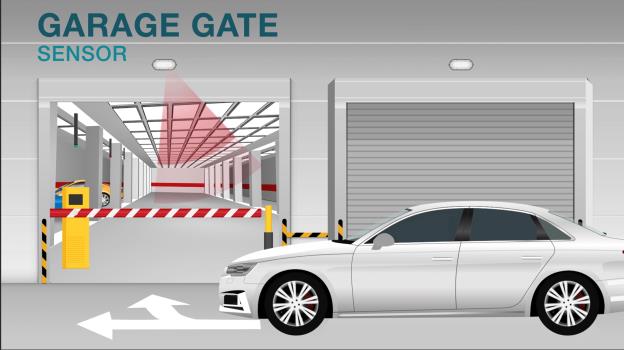
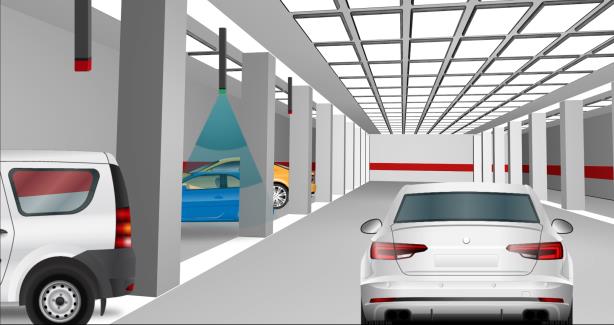
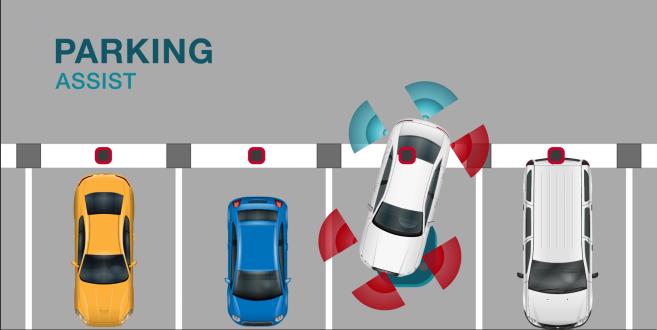
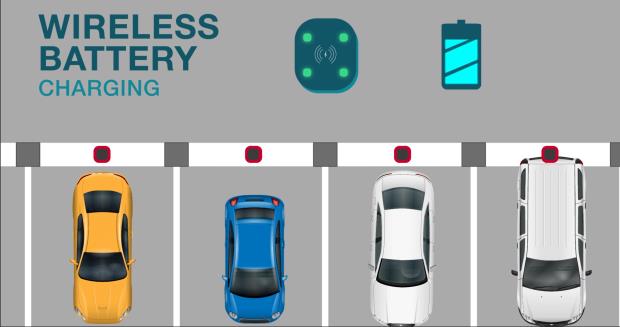
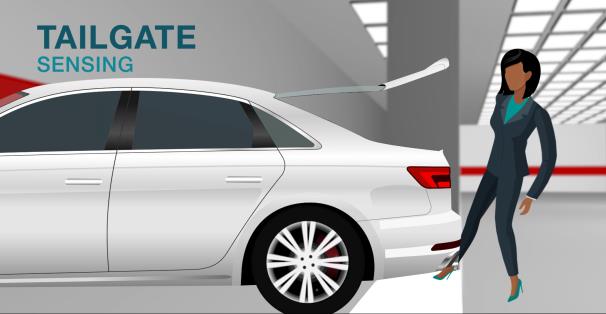
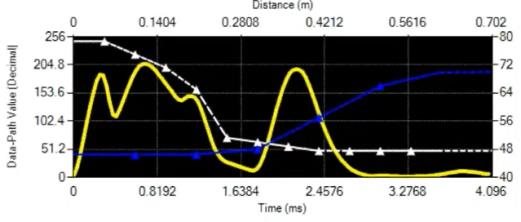 Figure 2 PGA460 Ultrasonic GUI
Figure 2 PGA460 Ultrasonic GUI